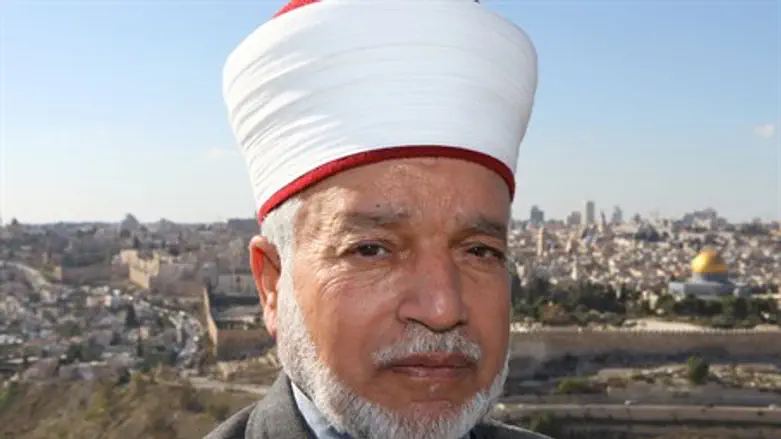
The religious leadership of the Palestinian Authority (PA) has expressed fierce opposition to the new decision of the Israeli government to expand the non-Orthodox mixed prayer section of the Western Wall (Kotel).
PA Grand Mufti Sheikh Mohammed Hussein reissued claims that the Kotel is a Muslim site belonging to the Islamic Waqf, referring to it as "Al-Buraq" Wall, a name given by Muslims to the Kotel in the 1920s in an attempt to claim it. The name refers to Mohammed's "winged steed" he supposedly rode to Jerusalem in his "night journey."
Joining his call was Sheikh Ekrima Sabri, head of the Supreme Muslim Council, who said, "the ground allocated by the occupation for prayer is Islamic Waqf land, and the assault on it is considered an assault on the rights of Muslims and Arabs."
The Al-Aqsa union for maintaining holy sites to Islam likewise said the decision harms "Muslim sites," adding, "the Al-Buraq Wall is an inseparable part of Al-Aqsa Mosque."
"The Al-Buraq Wall is an inseparable part of the western wall of Al-Aqsa Mosque and all the plaza grounds adjacent to the Al-Buraq Wall (belong to the) Islamic Waqf," added the union in an attempt to warp history at the holy site. The Kotel is the remaining western outer wall of the Second Temple, while the Al-Aqsa Mosque was built may centuries later on top of the Temple Mount, the holiest site in Judaism.
Sheikh Omar Kiswani, director of the Al-Aqsa Mosque, claimed that the UN has recognized the Kotel as part of Al-Aqsa Mosque, and therefore the new prayer space breaches international law.
However, while UNESCO last October passed a shocking resolution claiming ancient Jewish sites such as the Cave of Machpelah to be "Islamic," the PA demand to have the Kotel also recognized as "Islamic" was swiftly removed from the resolution following widespread condemnation, including from UNESCO's own Director-General.
The new Reform and Conservative prayer space, which is an extension of a pre-existing prayer section constructed back in 2013, has raised controversy in a number of circles.
On Monday Dr. Eilat Mazar of Hebrew University's archaeology institute warned Arutz Sheva that the new ramp for the prayer space will cover the last remaining site testifying to the destruction of the Second Temple, thereby seriously harming Jewish heritage.